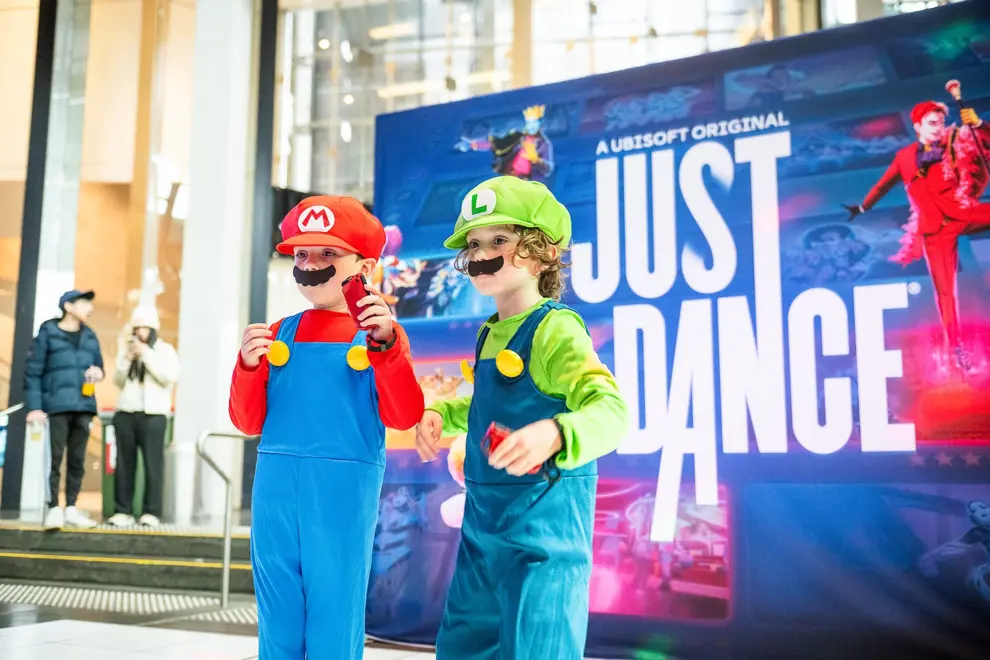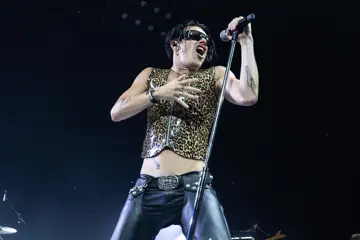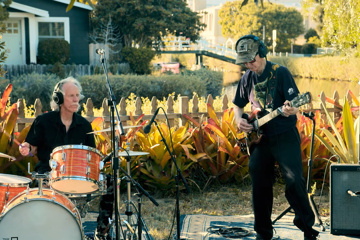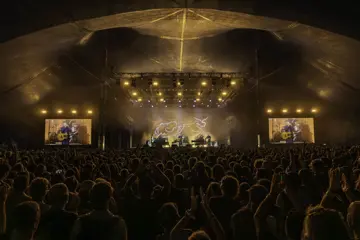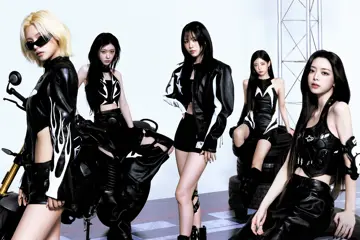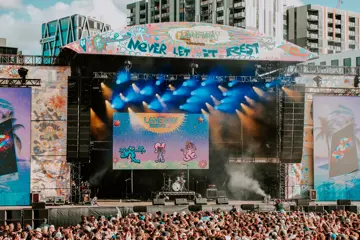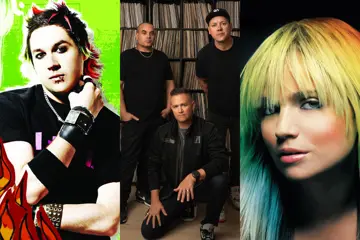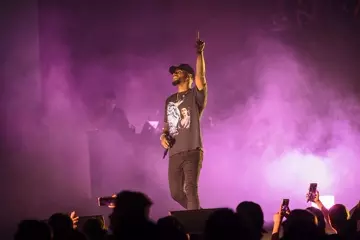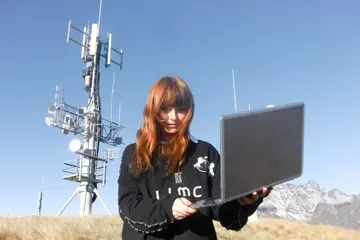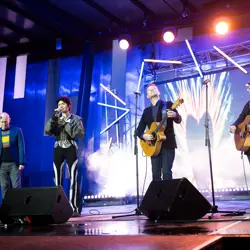 Big Games Night Out
Big Games Night OutNestled comfortably in the middle of this year’s Melbourne International Games Week program, Federation Square became a haven for gamers, geeks, and pop culture enthusiasts last night with the return of Big Games Night Out.
Following its debut last year, the all-ages event delivered a mostly immersive evening of gaming, replete with catwalk-strutting cosplayers, live music, stage performances, and a myriad of accessible games.
Attendees had free reign over a bevy of titles from modern releases, rhythm and dance favourites, retro arcade machines, adrenaline-pumping party classics, and tabletop and board game fare. True to its name, the Big Games Night Out free-to-play game zones came to life under the cover of dark and the venue’s purposeful lighting, with the crowds becoming noticeably larger following the culmination of the work day.
At the main square, the featured lineup was ever-active with a rotating and repetitious roster between Star Wars-centric busker The Bass In Vader bringing his signature bottom-end bouncing tunes, while a cosplay competition saw attendees show off their outfits on the runway; further audience participation was enlisted with games of Just Dance.
Don't miss a beat with our FREE daily newsletter
Honks galore resounded through many of ACMI’s halls with an exhibition dedicated to Melbourne developer House House’s 2019 megahit Untitled Goose Game, where concept art and digitised design documents lined the walls, and the game itself could be played across multiple different screens.
Upstairs, in the Swinburne Studio, a curated collection of ACMI-selected games were available to play as part of the AGDAs: ACMI Audience Award exhibit.
Secluded from the casual bustling of the primary game-zone assembly and the bombast of the main stage, the space offered a casual respite for many attendees eager to chat all things gaming pop culture. An array of Australian-made games were given a greater chance to shine in comparison to the passing presence of the Atrium’s assortment of titles.
Early on in the program, a special campaign of Dungeons And Dragons was presented by Gammin Guild’s all-Indigenous cast inside the Koorie Heritage Trust, with creative First Nations promoter Indiginerd founder and Yorta Yorta and Ngarrindjeri man Cienan Muir as guild master.
Attendees trickled in and out while many in the front rows remained attentive in witnessing the event, which saw a team of four role-players and a dungeon master carry out the campaign in a relatively conversational tone amidst a backdrop of medieval regalia.
The global debut of First Nations-first fantasy mobile game Blaktasia: Invasion of The Murk by Aboriginal-led studio GUCK, billed as the centrepiece highlight of the night, appeared later in the program.
The grand reveal itself was preceded by another performance by The Bass In Vader, who by that point in the evening could be considered a Big Games Night Out veteran. Though an additional 20 minutes had elapsed between Vader’s appearance and Blaktasia Universe’s scheduled commencement, a sizeable crowd had grown by the time the program highlight got underway.
The audience could feel palpable anticipation as the stage lights dimmed and the Blaktasia title card spread across the central screen. A rousing performance by Gunaikurnai gumleaf performer Uncle Herb Patten was followed by an enthusiastic yet short-lived set from Robert K Champion and The Blaktasia Band, including a joyous rendition of Sonia Dada’s You Don't Treat Me No Good.
The game’s mission statement, and its connection to land and country, was made evident with a voiceover description that signalled the beginning of the program centrepiece. Blaktasia’s introduction was followed by one more iteration of Just Dance.
Big Games Night Out, as a celebration of Australian games and its culture, has the capacity to become a worthy addition to the now-decade-old MIGW institution.
The event has the potential to become an even greater after-dark offering of joyous reverence for the local gaming scene’s place on the global stage and, should it continue its First Nations focus with subsequent iterations, an important step towards acknowledging a culture far too often overlooked in the physical space, let alone in the digital one.

